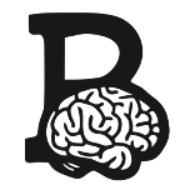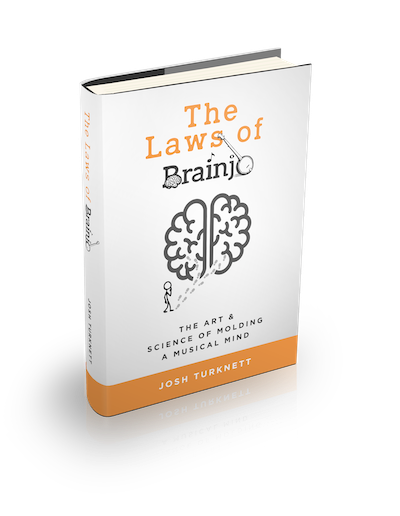THE SCIENCE OF BRAINJO

Do you like to nerd out on brain science? Then you’ve come to the right place!
The goal at Brainjo is to use neuroscience to help people lead richer and fuller lives. So here we’ll talk a bit about the science of Brainjo, and point you to some places where you can dig deeper.
CORE SCIENTIFIC CONCEPTS
There are 2 scientific concepts that are core to Brainjo, the Brainjo Method of instruction, and the mission of The Brainjo Academy.
Core Concept #1
The first core concept is that understanding and integrating the science of how the brain changes (i.e. neuroplasticity) into the learning process can significantly improve how effectively and efficiently we learn anything, including how to play music.
Core Concept #2
The second core concept is that the significant reduction in stimulation of plastic reorganization in the brain over the typical adult life is the primary driver of age-related cognitive decline and dementia. Likewise, continuing to stimulate plastic reorganization through the continuous acquisition of complex skills and knowledge maintains the brain in a youthful state, protecting against age-related cognitive decline and dementia – referred to here as “Demand Driven Restoration & Enhancement.”
CORE CONCEPT #1: The Science of Neuroplasticity & The Brainjo Method
There’s a widely held belief that some people are musical and some are not. And if you’re one of the musical people, then you can learn to play music. If you aren’t, then you cannot.
So if you’ve tried to learn music before and failed, it’s your fault.
This is absolutely false.
First, humans are a musical species. Saying that some humans are musical and some are not is like saying that some songbirds are born to sing and some are not. We all have the capacity to make beautiful music, if we choose to develop it.
“We all have the capacity to make beautiful music, if we choose to develop it.”
That said, learning of any kind – whether it’s memorizing state capitals (a dubious use of time), learning trigonometry, or learning how to play a musical instrument – requires changing your brain. And every brain is capable of making the kind of changes required to play music well, at any age.
Our success in learning is not determined by talent or aptitude, but by the path we take in learning. Because it’s our learning path that shapes how our brain changes. Put another way, our success is determined not by the brain we have, but by the brain we build, through practice.
Failures of learning aren’t failures of aptitude, but failures of process. If you’ve tried learning music before and weren’t successful, it’s because you didn’t follow a learning path that led where you wanted to go (and the goal of The Brainjo Method is to provide you the optimal path).
So if you’ve ever dreamed of learning a musical instrument, then you shouldn’t let anything or anyone (including that annoying voice inside your head!) stop you from pursuing that dream. And if you’ve tried before and weren’t successful, it does NOT mean that you aren’t musical.
“Success is not determined by the brain you have, but by the brain you build, through practice.”
The Theoretical & The Empirical
As stated, our success in learning music is driven by how well we utilize our brain’s ability to change itself. By understanding and applying the science of neuroplasticity, then, we can significantly increase the effectiveness of our learning process.
For this reason, the science of neuroplasticity is one of the primary sources of knowledge for The Brainjo Method of instruction. With this theoretically-driven approach, we are applying scientific principles that have been discovered about the brain to enhance the learning process.
The other primary source of knowledge about how to practice and learn more effectively are the people who’ve done just that. Once you realize that learning to play music well is about how you practice, it becomes readily apparent that the experts are a treasure-trove of information – not as sources of instruction per se (experts often have a very hard time teaching people how to do what they do), but as objects of study.
Specifically, in this empirically-driven approach, we study how experts practiced, or how they developed their expertise.
By combining this theoretically and empirically-driven approach, and by paying special attention to where these areas intersect, we can build a set of maxims for how to optimize the learning process, and integrate those into a system of instruction (The Brainjo Method).
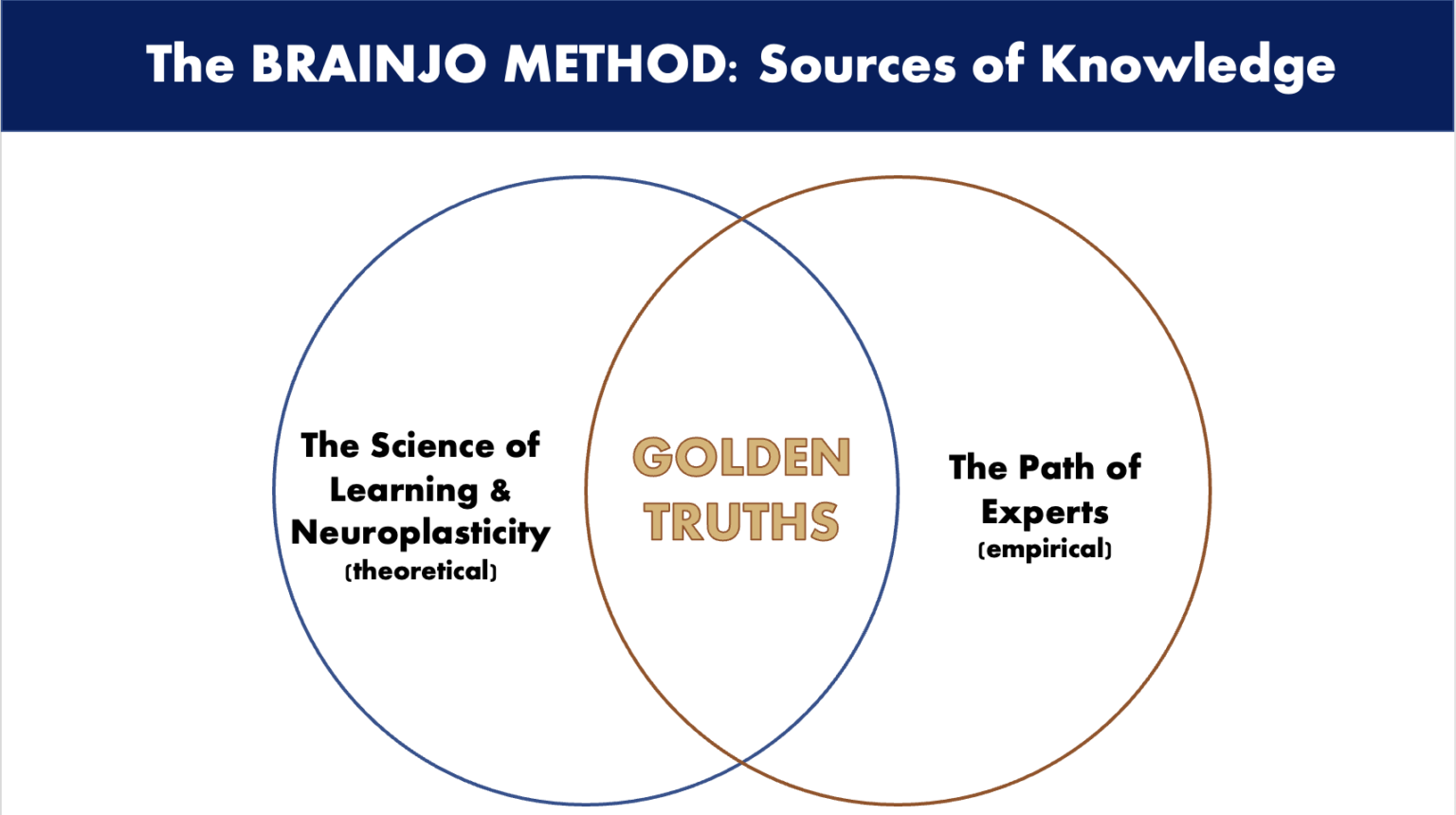
More on Plasticity-Based Instruction & The Brainjo Method
BOOK: The Laws of Brainjo
“The Laws of Brainjo: The Art & Science of Molding A Musical Mind.” reveals the principles of learning and neuroplasticity that are integrated into the Brainjo Method of instruction.
BRAINJO BITES
Brainjo Bites are short, “bite-sized” podcast (and video) episodes on the science of learning, neuroplasticity, and beyond. Click here to go to the main podcast page (includes episode transcripts).
CORE CONCEPT #2: Demand-Driven Restoration & Enhancement
A large and growing body of evidence indicates that the growth, repair, and restoration of brain tissue is directly coupled to the demands placed upon them. And this phenomenon of “demand coupling” appears to be a major driver, if not THE major driver, of age-related cognitive decline and dementia (including the major form of Alzheimer’s disease).
According to this model, brains don’t tend to deteriorate as we get older because of “aging,” but because our adults lives become increasingly less cognitively challenging over time, especially when compared to the cognitive demands of early life. Thus, increasing the amount of cognitive challenge can not only protect the brain from deterioration over time, but research indicates that it can even restore it to a more youthful condition and function. We refer to this phenomenon as Demand-Driven Restoration and Enhancement.
Furthermore, repair and restoration is directly coupled to cognitive activity, in the absence a sufficient level of cognitive challenge, supporting repair and restoration mechanisms through supplementation, dietary changes, or pharmaceuticals will have little to no impact on brain health and function.
“Increasing the amount of cognitive challenge can not only protect the brain from deterioration with age, it can improve cognitive function.”
If our goal is widespread protection and restoration of brain tissue, then the ideal activities for providing this sort of challenge are ones that stimulate plastic reorganization across the cerebral cortex (“whole brain workouts”) – activities that are analogous to the challenge provided by the childhood neuro-developmental program. And there is no better activity for stimulating plasticity across the whole brain than learning a musical instrument (along with dance and skill sports). Plus, learning to play an instrument has the added benefit of being loads of fun!
The Autopilot and Plasticity Indices
One of several reasons why our adult lives tend to be less cognitively challenging is because adults have typically mastered the skills needed to live independently. That includes the three most complex cognitive functions most humans ever learn – walking, talking, and socializing – as well as the knowledge and skills needed to perform familial, occupational and societal roles.
As a result, it becomes increasingly easy to successfully navigate through adult life on “autopilot,” relying on mature neural networks that mediate “automatic” behaviors, while the acquisition of new complex skills and knowledge becomes increasingly unnecessary.
Yet, as stated, the health of our brain appears directly correlated to proportion of time spent we spend engaged in cognitively challenging activities, which is reflected in the amount of neural reorganization that occurs in response to our daily experience. Likewise, the health of the brain is inversely correlated to the proportion of time we spend on “autopilot.”
“The health of the brain is inversely correlated to the proportion of time we spend on ‘autopilot’.”
We may refer to the proportion of each day spent relying on mature, automated neural networks as our “Autopilot Index,” and the proportion of each day stimulating brain change as our “Plasticity Index.” The greater our Plasticity Index, the greater the amount of growth, restoration, and repair that occurs in the brain (provided we eat and live in a manner that facilitates those growth and restoration mechanisms).
Both the amount of time spent engaging in cognitively challenging activities, and the amount of cortical tissue engaged by those activities, will increase the Plasticity Index.
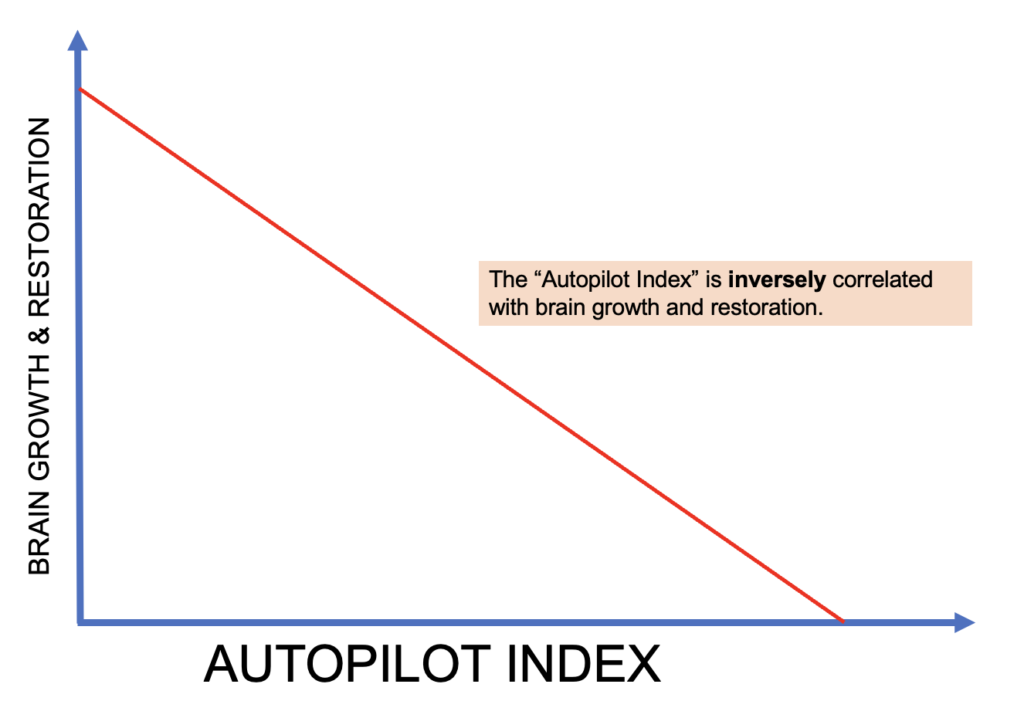
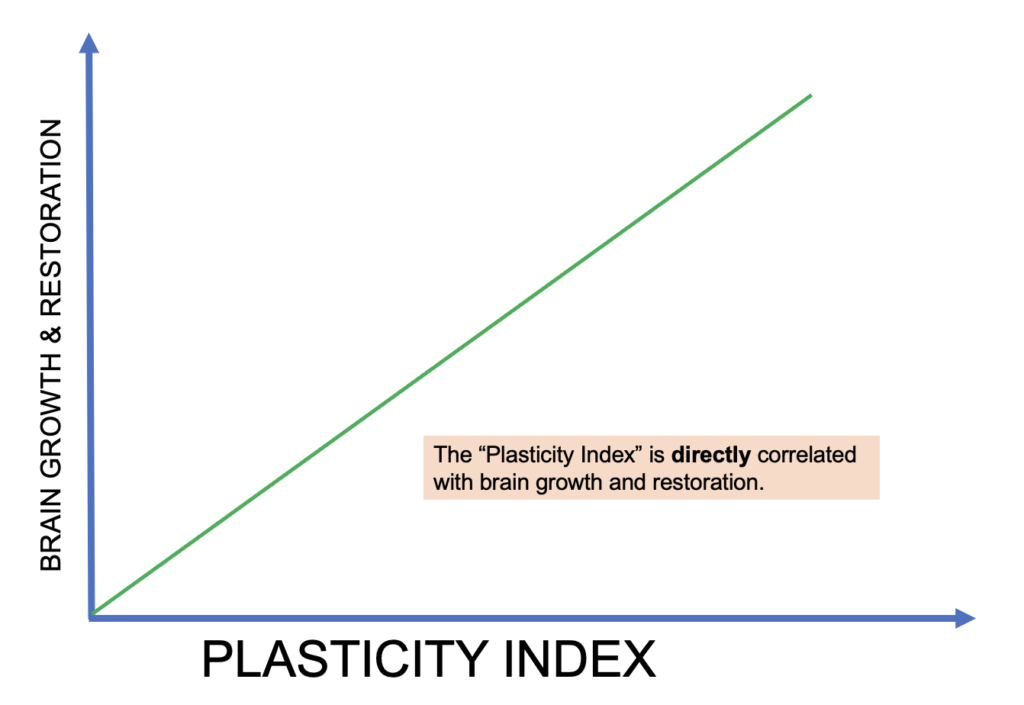
More on Demand-Driven Restoration & Enhancement
“Demand Coupling Drives Neuro-degeneration: A Model of Age-Related Cognitive Decline & Dementia”
In this paper, Brainjo founder Dr. Josh Turknett and neuroscientist Dr. Tommy Wood discuss the evidence indicating that age-related cognitive decline and Alzheimer’s dementia are driven by reduction in cognitive demands over the human lifespan.
“Reclaiming Youth: The Best ‘Brain Games’ for Brain Protection & Performance
Dr. Turknett, founder of Brainjo, reviews Demand-Driven Decline Theory as a guest lecturer at the Institute for Human & Machine Cognition (IHMC).
Intelligence Unshackled: Interview with Dr. Michael Merzenich
In this interview from the Intelligence Unshackled podcast, Dr. Michael Merzenich discusses his pioneering work in the field of neuroplasticity, including his ground-breaking research demonstrating the connection between plasticity and brain restoration.
Ok, now it’s time to apply the science!
Click below to start growing, protecting, and restoring your brain with neuroscience-based musical instruction.
